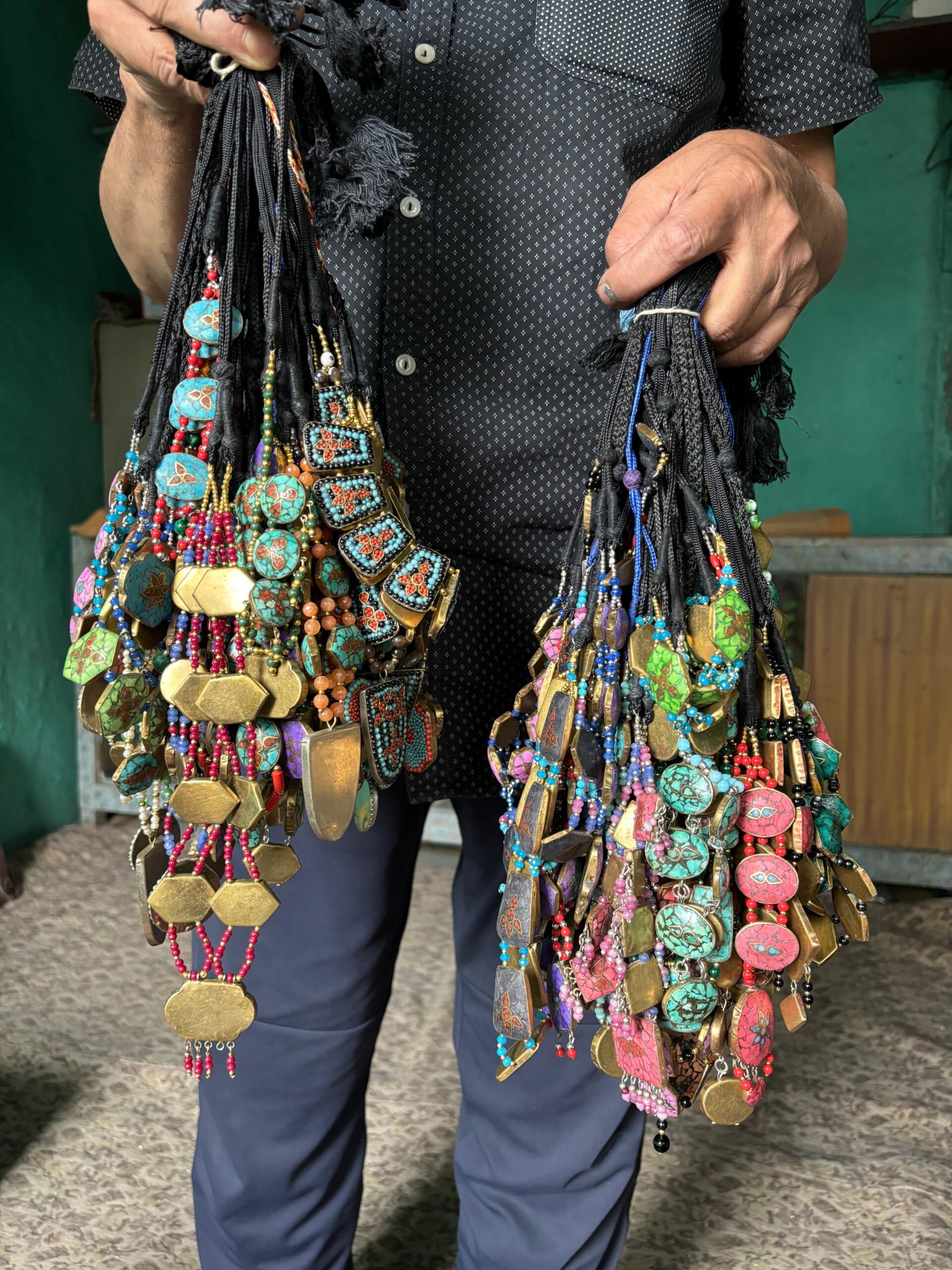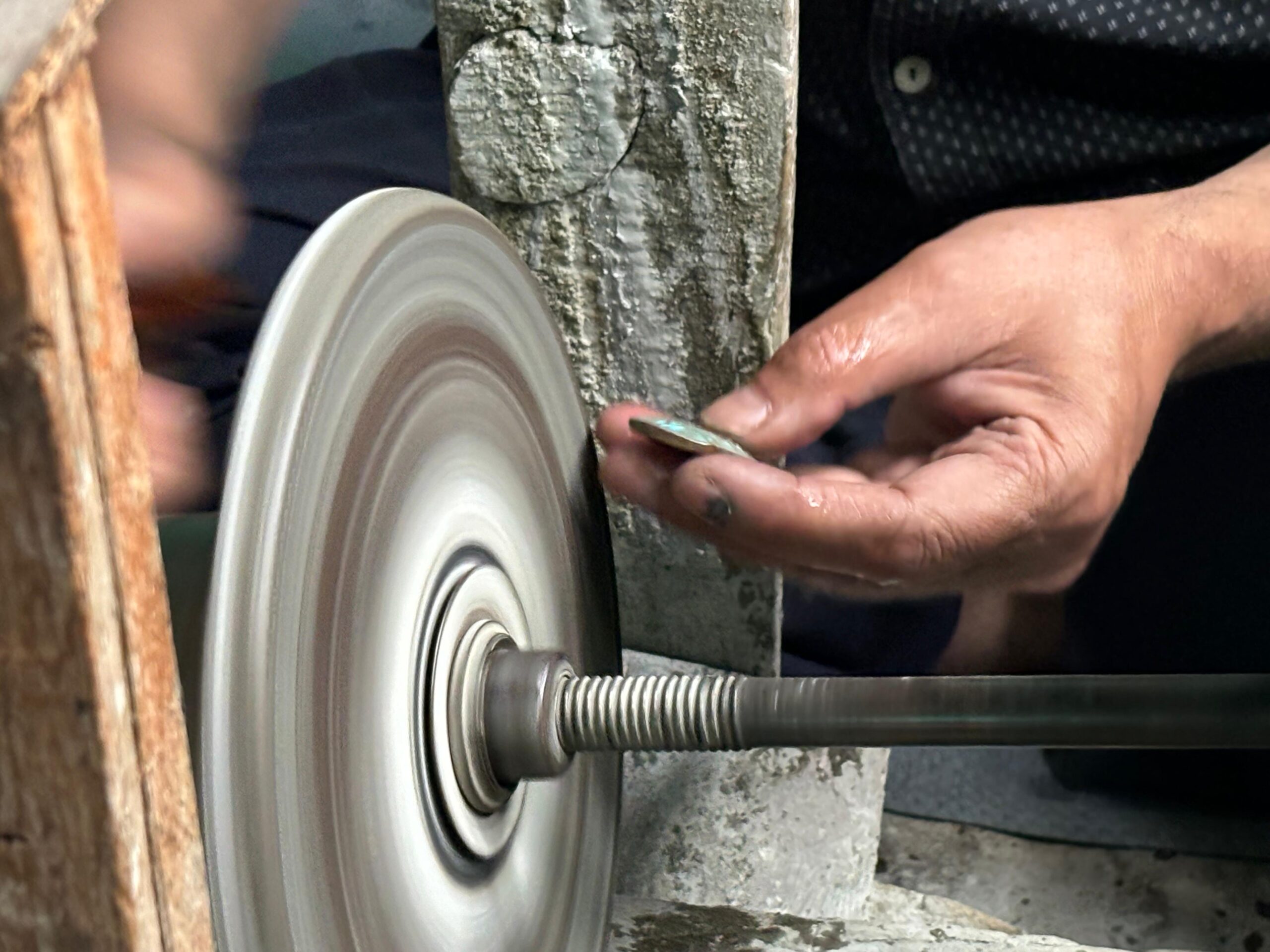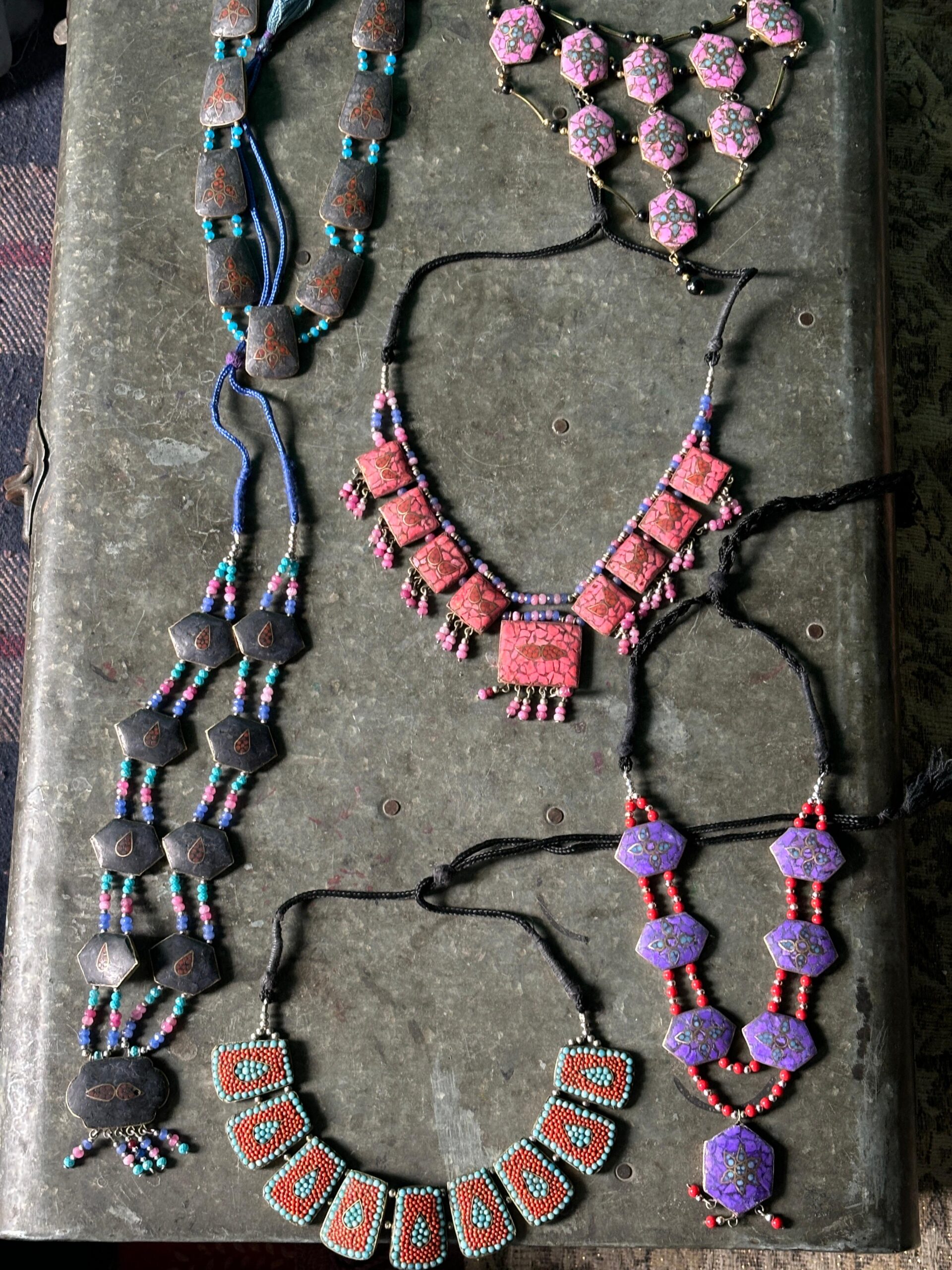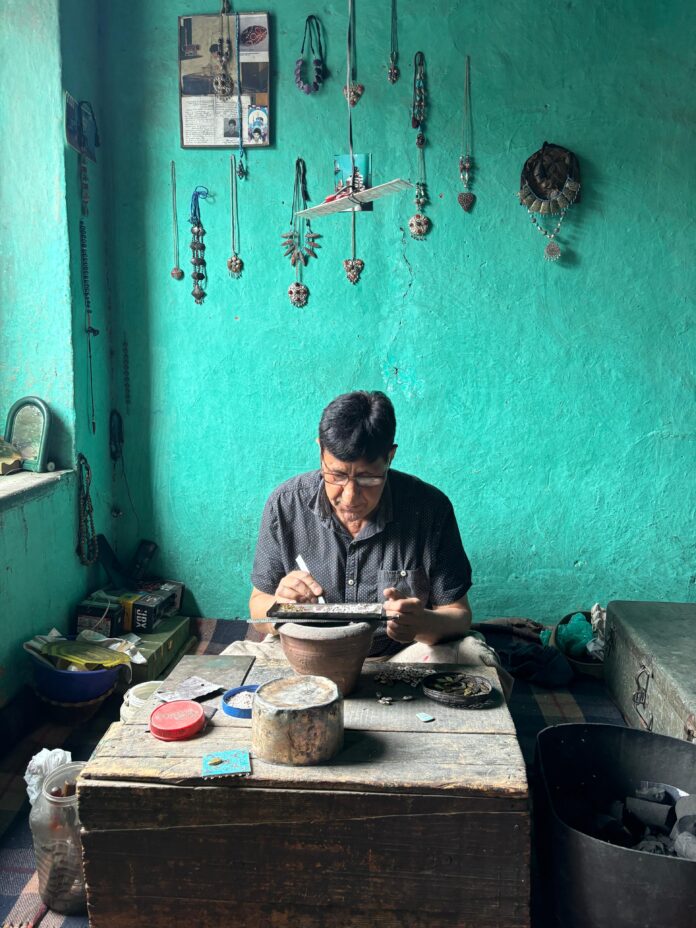Mohammad Aatif Ammad Kanth, TwoCircles.net
Srinagar: In the early morning, as the streets of downtown Srinagar — known for its artisans and art forms — begin to buzz with activity, shopkeepers display their goods and autowalas wait for customers. Mohammad Hanief Bhat, 62, starts his day by opening a window in his workstation, located on the first floor of a 100-year-old building. As sunlight streams into his room, he begins assembling small pebbles, which he will set into a brass shell to create a necklace. This craft, known as Ferozi in Kashmiri and Turquoise in English, involves making jewellery with stones fixed in brass, and Hanief is its last guardian.
“This is a challenging art, but it is my identity. My father practiced it, and back then, this craft was well-recognized and loved by foreigners. They would come here and purchase items from us. In the 1970s, my father employed more than 30 artisans who worked under him,” he said.

Hanief was young but the eldest in his family when he lost his father. Since this art form was their only source of income, he eventually had to take matters into his own hands and manage the small workstation where 30 artisans who had worked under his father taught him the craft.
He was just a child, a grade five student, when he lost his father. Being the eldest among his siblings, he had to take on the responsibility of managing the family’s turquoise art workshop, their sole source of income. Fortunately, the artisans working in their workshop were kind and taught him the craft very well.
Over time, Hanief mastered the art, but the demand for it mysteriously declined. Consequently, many artisans abandoned the craft as it no longer provided a sufficient income for survival. The number of artisans dwindled from 30 to just 5.

Hanief’s father crafted hundreds of pieces of jewellery each week, which he would take in a large basket every Friday to a family with a showroom in Zainakadal, just 2 kilometers from Hanief’s home. This family would then sell the jewellery in their showroom. According to Hanief, they always managed to sell everything they made, despite never having any pre-orders, as everything they produced was sold to that business family.
The same trend persisted when Hanief took over; the demand remained steady, and he was able to sell everything he made. However, over time, the demand declined for reasons Hanief couldn’t understand. Consequently, many artisans abandoned the craft, leaving Hanief as the only one who continued it.
Aside from Hanief’s father, more than 60 families were involved in the craft of turquoise. However, over time, everyone abandoned the craft, leaving Hanief as its last guardian. As the artisans departed, Hanief also quit for a few months, leaving no artisans remaining, and he began selling carpets instead.
“In the 1990s, nearly everyone abandoned the art, and I also thought it was not worth continuing since there were no buyers. I eventually left it and started selling carpets. Although I earned more from selling carpets, I was never satisfied with that profession. I felt it would be a great injustice to the art that my father devoted his life to. So, I left everything else and returned to practicing the art of Ferozi,” Hanief explained.
When Hanief resumed making turquoise jewellery, he found that there were no longer any major buyers to sell it to customers, as the previous showroom owners had lost interest due to decreased demand.
However, his sister, whose family runs businesses in Bangalore, suggested he come to Bangalore for art exhibitions to sell his jewellery. There, he discovered that people were attracted to his art, with many NRIs and foreigners purchasing from him. This allowed him to sell a significant amount of jewellery, but the exhibitions only lasted a few days.
Hanief visited Bangalore every year and set up a stall at the exhibition, managing to sell a good quantity of jewellery. However, it wasn’t enough for him to sustain a livelihood solely from the craft.
“Bangalore exhibitions gave me a lot of hope and motivation to continue the craft,” said Hanief, adding, “People used to come and praise me there. It gave me a lot of confidence and recognition”.
New Innovations in the Craft
Traditionally, turquoise jewellery was exclusively blue and featured very simple designs. However, Mohammad Hanief introduced innovations after several buyers in Bangalore expressed a desire for more colours and designs. Upon returning to Kashmir, he thoughtfully incorporated new colourful stones and created different designs. He even added unique elements, such as breaking thin wires into small pieces to use in necklaces for a distinctive look.

Hanief remarked, “I used to get bored making the same designs and colours every time, but I never thought of doing something new. It was only when some foreign buyers at an exhibition in Bangalore suggested that I introduce more varieties and colours. I then started creating jewellery in different colours that people would love and adore. I felt happy and satisfied making these new types of jewellery.”
He currently makes turquoise jewellery in almost every colour.
No Government Support
Despite the widespread appreciation for Hanief’s art of crafting turquoise jewellery, the local government has never recognized his efforts, even though he received accolades from states like Kerala.
Hanief remarked, “Although I have carried this art on my shoulders for years and I am the only one left practicing it, our government has never appreciated or recognized me. However, officials from Kerala and Karnataka have always praised me and assisted in setting up stalls in Bangalore.”
Mohammad Hanief’s artisan card, issued to artisans of various crafts, expired in 2022. Despite submitting it to officials for renewal, the process is still pending. Hanief believes that the officials do not take his art seriously, which is why they show little interest in his official matters.
Concern for the Art’s Survival
Mohammad Hanief, now in his sixties, is deeply concerned that his craft will perish with him, as he has no children to carry on his legacy as he did after his father’s passing.

